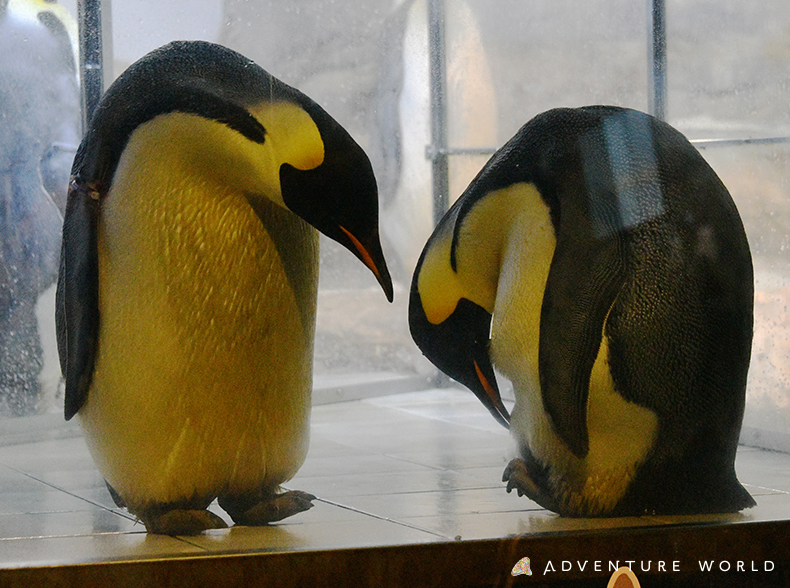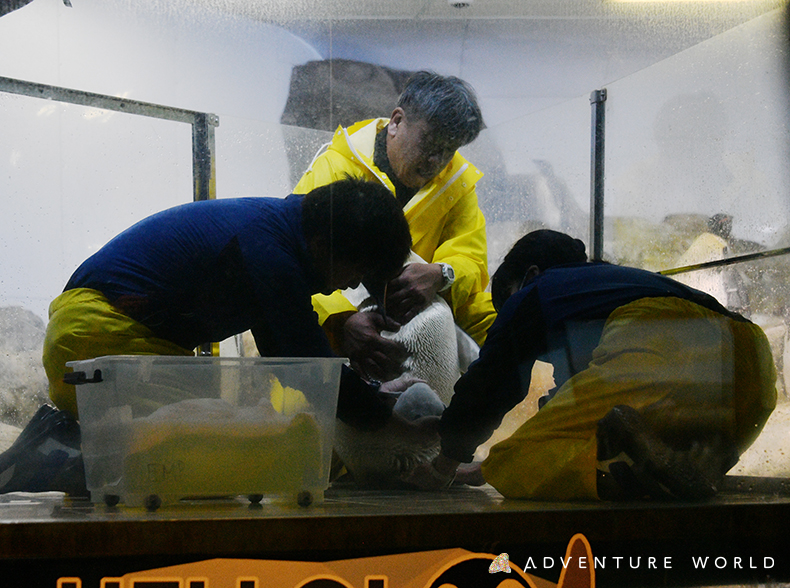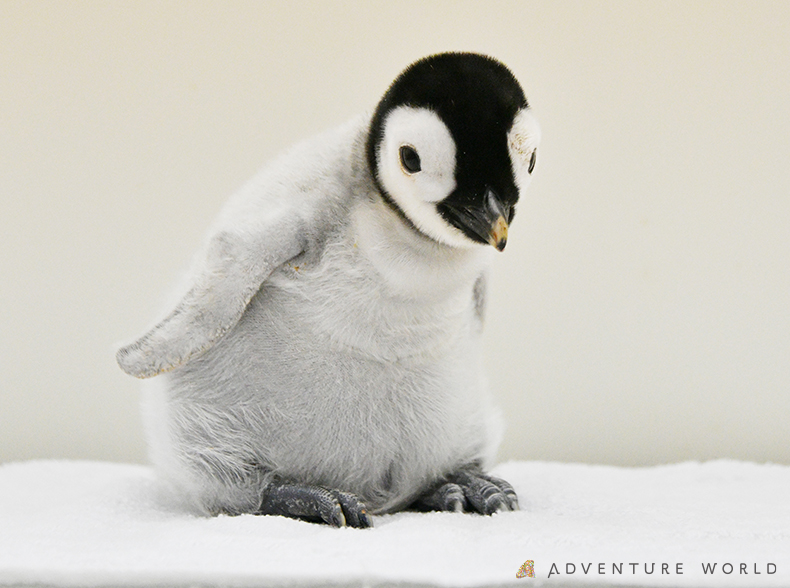- HOME
- Topics.
- The baby emperor penguins born on September 30, 2011, have been raised by a young pair of parents since Tuesday, October 21, 2011!
The baby emperor penguins born on September 30, 2011, have been raised by a young pair of parents since Tuesday, October 21, 2011!

Before the park opened today, Tuesday, October 21, we entrusted the baby Emperor penguins born on Tuesday, September 30, 2025 to a young pair, separate from the parent birds, and started the challenge of natural brood rearing.
After the eggs were laid, they were kept warm in an incubator to prevent damage to the eggs, and the parents of the baby penguins were given a mock egg (a plaster cast of an egg that resembles a real egg in shape and texture) to hold in order to maintain the egg-holding posture. However, the parent birds abandoned the artificial eggs halfway through the incubation, so we decided to leave the babies in the care of a younger pair, who had no experience raising eggs, to gain experience in child rearing. The young pair's learning through the growth of their babies is an important step toward future breeding.

Before the park opened, the breeding staff replaced the baby with a pseudo-egg held by the young pair. At first, the young pair lifted their bellies to check on the baby, but after a while they settled down and held the baby.
From now on, the staff will support the parents and the baby birds toward the success of natural brood rearing by conducting attendant feeding while the young pair, which will take the place of the parent birds, holds the baby.

The baby Emperor Penguins will be shown on the 2nd floor of the Marine Penguin Pavilion instead of the 1st floor of the Penguin Base due to the transfer of the baby penguins to natural brooding.
The baby penguins will be shown to the public from the first floor of the Penguin Base to the second floor of the Marine Pavilion due to the transfer of the penguins to the natural rearing of baby penguins.
Please note that the baby birds may be difficult to see because they live under the belly (near the feet) of the parent birds.

